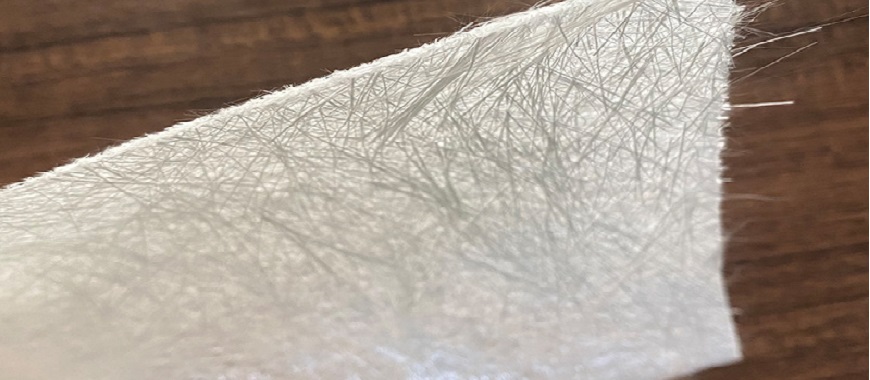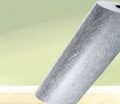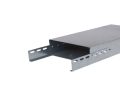
Fiberglass repairs often raise the question, do you use chopped strand mat with roving for optimal results? These two materials serve distinct yet complementary purposes in strengthening and reinforcing fiberglass structures. Chopped strand mat (CSM) excels in creating smooth surfaces and evenly distributing resin, while woven roving is valued for its high strength and stability. Combining these materials in repair processes enhances structural integrity and ensures lasting durability. Understanding when and how to use chopped strand mat with roving is essential for achieving a professional finish. By exploring their unique properties and benefits, you can make informed decisions for fiberglass repairs, whether working on boats, vehicles, or other composite projects.
Do You Use Chopped Strand Mat with Roving:When to Use
The question do you use chopped strand mat with roving often arises during fiberglass repairs, as their combination can offer numerous benefits. Understanding the appropriate situations for using these materials together is key to achieving durable and high-quality results.
Layering Techniques in Fiberglass Repairs
Combining chopped strand mat (CSM) and woven roving in fiberglass repairs ensures strength, flexibility, and efficient resin distribution. Proper layering techniques prevent weak spots and improve overall structural integrity.
- Importance of Combining CSM and Roving
- CSM helps evenly distribute resin, ensuring no dry patches or bubbles form.
- Woven roving adds significant strength and prevents material stretching under load.
- Using both materials together balances strength with smooth surface finishing.
- Common Layering Configurations
- Roving with an Intermediary CSM Layer
- This configuration improves adhesion between layers and avoids direct bonding of roving to roving.
- The CSM layer prevents delamination and increases the repair’s longevity.
- Multiple Wet-on-Wet Applications
- Applying CSM and roving in quick succession ensures strong bonds before resin curing.
- This method reduces sanding needs between layers, speeding up the repair process.
- Roving with an Intermediary CSM Layer
- Advantages of Proper Layering
- Enhanced resistance to cracking and wear.
- Improved aesthetic finish due to smoother surfaces.
- Better load distribution across repaired sections.
Practical Scenarios for Combining Materials
Do you use chopped strand mat with roving in specific projects? Practical applications showcase how these materials work together to achieve optimal results.
- Applications in Boat Repairs
- Strengthening hulls and deck structures with alternating layers of CSM and roving.
- Resurfacing worn areas to improve water resistance and structural stability.
- Structural Reinforcements
- Enhancing support beams and frameworks by combining CSM for resin distribution and roving for strength.
- Repairing cracks or holes in composite panels using multiple layers.
- Custom Fiberglass Projects
- Crafting durable and lightweight parts for automotive or industrial use.
- Shaping complex curves and molds where CSM smooths edges, and roving provides stability.
- Benefits of Using CSM and Roving Together
- Seamless integration of strength and flexibility in repairs.
- Ability to create durable layers with fewer weak points.
By understanding do you use chopped strand mat with roving effectively, you can tailor repair techniques to meet the specific needs of your fiberglass project.
Chopped Strand Mat or Woven Roving: Which is Better?
Compatibility of Chopped Strand Mat with Resins
Do you use chopped strand mat with roving and wonder how it interacts with different resins? Understanding resin compatibility ensures the success of your fiberglass projects. Both polyester and epoxy resins offer unique benefits, but their use with chopped strand mat (CSM) and roving requires specific considerations.
Polyester vs Epoxy Resin with CSM and Roving
Choosing the right resin is crucial when working with CSM and roving. Compatibility challenges can arise, especially with traditional CSM and epoxy resins. Below is a comparison table to illustrate key differences.
| Factor | Polyester Resin | Epoxy Resin |
|---|---|---|
| Compatibility with CSM | High compatibility with traditional CSM. | Limited compatibility with traditional CSM. |
| Bond Strength | Moderate strength; suitable for small repairs. | Exceptional strength for critical structural applications. |
| Cost | Affordable, widely used in general repairs. | Expensive but offers superior durability. |
| Modern CSM Options | No special CSM required. | Requires epoxy-compatible CSM for best results. |
| Curing Time | Shorter curing time, faster project completion. | Longer curing time but provides better performance. |
- Challenges with Traditional CSM and Epoxy Resins
- Standard CSM uses styrene-based binders, which do not dissolve in epoxy resins.
- This incompatibility can lead to poor adhesion and weak layers.
- Modern Epoxy-Compatible CSM
- Epoxy-compatible CSM uses alternative binders that dissolve efficiently in epoxy resins.
- These materials offer the flexibility to combine the benefits of CSM and epoxy resin.
- When to Use Each Resin Type
- Polyester resin is suitable for cost-effective, non-critical repairs.
- Epoxy resin excels in demanding applications where strength and durability are paramount.
Preparing Materials for Resin Application
Proper preparation of CSM and roving is essential to ensure strong bonds when using resin. Failure to prepare materials can result in weak layers or delamination.
- Steps for Preparing Materials
- Sand surfaces thoroughly to remove contaminants and create a rough texture for adhesion.
- Clean materials using a solvent to eliminate dust, grease, or residues.
- Wet out CSM and roving layers with resin to ensure complete saturation and prevent dry patches.
- Avoiding Dry Gaps and Weak Bonds
- Apply resin generously to avoid areas of poor adhesion between layers.
- Use tools like rollers to remove air bubbles and ensure uniform resin distribution.
- Tips for Successful Layering
- Always work with compatible materials to prevent curing issues.
- Avoid allowing layers to dry fully before applying additional layers unless sanding is done between applications.
By considering resin compatibility and preparing materials correctly, you can effectively answer the question, do you use chopped strand mat with roving, and achieve durable, high-quality repairs.
Do You Use Chopped Strand Mat with Roving:Step-by-Step Guide
When addressing the question do you use chopped strand mat with roving, following a structured approach is essential for achieving optimal results. This guide outlines the preparation and layering processes to ensure strength and durability in fiberglass projects.
Preparation and Material Selection
Proper preparation and material selection are critical steps in using chopped strand mat (CSM) and roving together. These steps determine the success and longevity of your repair.
- Choosing the Right Type of CSM and Roving
- Select chopped strand mat that matches your resin type, such as epoxy-compatible CSM if using epoxy resin.
- Use woven roving with appropriate strength and weight for your project, ensuring it suits the structural demands.
- Consider project requirements, such as flexibility, strength, and finish quality, before selecting materials.
- Preparing Surfaces
- Sand surfaces thoroughly to remove old resin, dirt, or uneven textures, ensuring good bonding between layers.
- Clean the prepared surface with a solvent or alcohol to remove dust and grease.
- Ensuring Proper Resin Mixing
- Mix resin and hardener according to the manufacturer’s instructions for accurate curing and strong adhesion.
- Avoid air bubbles during mixing to ensure smooth application across CSM and roving layers.
Layering Process
The layering process is key to effectively using CSM and roving together. Following proper techniques enhances the repair’s structural integrity and appearance.
- Step-by-Step Application of CSM and Roving Layers
- Apply a thin layer of resin to the prepared surface for initial adhesion.
- Lay down the first CSM layer and saturate it with resin until fully soaked.
- Smooth out air bubbles with a roller or brush to ensure even resin distribution.
- Place a layer of woven roving over the CSM and repeat the saturation process.
- Alternate between CSM and roving layers as needed for the project, ending with a roving layer for strength.
- Tips for Achieving a Smooth and Strong Finish
- Work wet-on-wet to avoid gaps and ensure strong bonds between layers.
- Use tools like rollers to remove excess resin and eliminate trapped air.
- Avoid over-saturating the materials, as too much resin can weaken the structure.
- Allow adequate curing time for the final layer before sanding or finishing.
By carefully preparing materials and following a step-by-step approach, you can confidently answer the question, do you use chopped strand mat with roving, and achieve professional-quality fiberglass repairs.
Chopped Strand Mat Advantages for Strength and Durability
Do You Use Chopped Strand Mat with Roving:Common Mistakes
If you wonder do you use chopped strand mat with roving, avoiding common mistakes is crucial for achieving a durable and professional repair. Understanding these errors ensures stronger bonds and better overall results in your fiberglass projects.
Skipping Intermediary Layers
Intermediary layers play a vital role in combining CSM and roving effectively. Overlooking this step can weaken the structure.
- Why Intermediary Layers Are Essential
- Chopped strand mat (CSM) provides an even surface for bonding woven roving layers, preventing delamination.
- It ensures smooth resin distribution, which improves adhesion between layers.
- Mistakes and Consequences
- Skipping CSM layers can result in weak bonds between roving layers, especially under stress.
- Projects without intermediary layers may experience premature cracks or separation of materials.
- Tips to Avoid Skipping Layers
- Always alternate between CSM and roving layers for added strength and durability.
- Plan layering sequences before beginning to ensure no steps are missed.
Using Incompatible Resins with CSM or Roving
Not all resins work equally well with CSM and roving, and improper pairing can compromise project quality.
- Common Compatibility Issues
- Traditional CSM is not compatible with epoxy resin due to styrene-based binders.
- Using polyester resin with epoxy-compatible CSM may lead to unnecessary costs or suboptimal performance.
- Consequences of Incompatible Resins
- Poor resin absorption can cause dry spots, reducing the strength of the bond.
- Incorrect resin types may lead to incomplete curing or uneven finishes.
- Solutions for Resin Compatibility
- Use epoxy-compatible CSM when working with epoxy resin.
- Ensure proper research on resin and material compatibility before starting your project.
Allowing Layers to Dry Before Bonding Additional Ones
Timing is critical when layering CSM and roving. Allowing layers to dry fully can result in weak bonds.
- Impact of Dry Layers on Adhesion
- Dry layers create smooth surfaces, making it difficult for subsequent layers to bond properly.
- Weak adhesion increases the risk of delamination under stress.
- How to Prevent This Mistake
- Apply additional layers while the resin is still tacky to ensure a strong wet-on-wet bond.
- If layers dry unintentionally, sand the surface thoroughly before applying the next layer.
Checklist of Mistakes to Avoid
- Forgetting intermediary CSM layers between roving layers.
- Ignoring resin compatibility with chosen materials.
- Allowing layers to dry completely before adding more.
Avoiding these mistakes helps confidently answer the question, do you use chopped strand mat roving, ensuring your fiberglass project is durable, reliable, and of professional quality.
How Chop Strand Mat Thickness Affects Performance
How to Maintain and Extend Fiberglass Repairs with CSM
At GangLong Fiberglass, we understand that maintaining fiberglass repairs is as important as the initial application. If you’ve asked, do you use chopped strand mat with roving, the answer is yes—but maintenance ensures that the combination delivers lasting durability. Following best practices will help you preserve the structural integrity of your projects.
Ensure Proper Edge Sealing for Long-Lasting Repairs
Sealing edges correctly is critical for preventing damage and prolonging the lifespan of fiberglass repairs.
- Why Edge Sealing Matters
- Exposed edges are more susceptible to water infiltration, which can compromise the bond between layers.
- Proper sealing prevents resin deterioration and reinforces the structure.
- Our Tips for Edge Sealing
- Apply a generous layer of resin to all exposed edges for complete coverage.
- Use chopped strand mat (CSM) to create a smooth, sealed transition along the edges.
- Sand and reapply resin periodically to address wear over time.
Monitor Repairs for Signs of Delamination or Wear
Regular inspections help identify issues early, ensuring your fiberglass repairs remain strong and functional.
- Common Issues to Look For
- Delamination, where layers begin to separate or peel.
- Visible cracks or bubbles indicating improper bonding during initial application.
- Inspection Practices We Recommend
- Check for soft spots or flexing that could signal weakened roving layers.
- Conduct visual inspections after heavy use or exposure to harsh conditions.
Replace Heavily Damaged Layers or Underlying Structures When Necessary
Despite proper application, certain repairs may require replacements over time. Understanding when to replace materials is essential.
- When to Consider Replacing Materials
- Layers with significant cracks, fraying, or visible gaps in the resin.
- Underlying structures showing rot, rust, or irreparable damage.
- Our Approach to Layer Replacement
- At GangLong Fiberglass, we recommend removing old layers and reapplying chopped strand mat and roving as needed.
- For major repairs, use a fresh combination of epoxy resin and modern CSM to ensure maximum compatibility.
At GangLong Fiberglass, we’re committed to helping you get the most out of your fiberglass projects. By following these tips, you can confidently say yes when asked, do you use chopped strand mat with roving, knowing that your repairs will stand the test of time.
FAQs about Do You Use Chopped Strand Mat with Roving
Chopped strand mat (CSM) is ideal for projects that require smooth surfaces, resin distribution, and initial reinforcement layers. It is commonly used in fiberglass repairs, where its randomly oriented fibers create uniform strength in all directions. Use CSM when working on curved surfaces or areas that need even resin coverage to avoid air pockets. CSM is also suitable for filling gaps, creating intermediary layers between woven roving, and enhancing adhesion. In applications such as boat hull repairs or fiberglass molds, CSM ensures a seamless finish while adding stability. Always pair it with compatible resins and layer it strategically for optimal results.
The key difference lies in their structure and applications. Chopped strand mat consists of short, randomly oriented fibers held together by a binder. It is primarily used for smooth surfaces and resin distribution. Woven roving, on the other hand, is made of continuous strands woven into a fabric. It provides higher tensile strength and is better suited for structural reinforcement. While CSM ensures even resin coverage, woven roving adds durability and dimensional stability. Together, they complement each other in fiberglass projects, creating a balance of strength and flexibility.
Fiberglass chopped strand mat is used in applications that require even resin distribution, smooth surfaces, and general reinforcement. It is commonly employed in boat repairs, automotive parts, and fiberglass molds. Its random fiber orientation makes it suitable for areas with complex shapes or curves. CSM is also used as an intermediary layer between structural reinforcements like woven roving to improve adhesion and prevent delamination. It works well in creating a seamless base for gel coats or top layers, ensuring a clean and professional finish in fiberglass projects.
Woven roving mat is used for applications that require high tensile strength and structural integrity. It is often employed in reinforcing large fiberglass structures, such as boat decks, tanks, or composite panels. The woven pattern of roving mats allows for excellent durability, making them suitable for load-bearing areas. Woven roving is also commonly layered with chopped strand mat to enhance bonding and strength. Its ability to resist stretching and cracking makes it a popular choice for projects that require long-term stability under stress.

As the editor of GangLong Fiberglass, I have years of experience and in-depth research, focusing on cable tray products, fiberglass solutions, and grille systems. I incorporate years of industry insights and practical experience into every content, committed to promoting the progress of the industry. At GangLong Fiberglass, my commitment is reflected in every product, from innovative cable trays to durable fiberglass solutions and sturdy grille systems. As an authoritative voice in the industry, my goal is to provide valuable information to professionals and businesses and promote forward-looking solutions.


